Functional outdoor apparel is much less affected by passing fashion trends than casual wear. This in itself makes outdoor apparel much more sustainable, as such garments are often of a higher quality and thus both lasting and being used longer than ‘fast fashion’ items. There is, however, one area where the outdoor apparel industry has bigger sustainability issues than that of casual wear – the use of PFCs (perfluorinated compounds) for making garments and gear water-resistant. In this article we will explain what the problem with PFCs is, what manufacturers are doing to address the issue and what you yourself can do to avoid contributing to the problem.
Table of Contents:
- What are PFCs and what are they used for?
- What is the problem with PFCs?
- What is the outdoor industry doing?
- What can you do?
What are PFCs and what are they used for?
PFC is short for PerFluorinated Compound, which in chemical terms means that it “is an organofluorine compound containing only carbon-fluorine bonds (no C-H bonds) and C-C bonds but also other heteroatoms” according to Wikipedia. Put in more simple terms, PFCs are carbon chains of various lengths where the hydrogen atoms are either completely (=perfluorinated) or partially (=polyfluorinated) replaced with fluorine atoms (we will talk more about the importance of chain length further down in the article).
When referring to PFCs, we are thus talking about a group of over 800 substances with similar chemical and physical properties. The great thing about PFCs is that they are very effective in repelling water, dirt and oil from garments and gear treated with such substances, not least because they offer high mechanical, thermal and chemical stability. This means that PFCs are not easily rubbed off by wear and tear, nor affected severely by temperature changes – which make them ideal for garments and gear used in very alternating conditions such as hot/cold and dry/wet weather.
PFCs have therefore been used extensively for decades in the outdoor industry, where they are mostly used in DWR (Durable Water Repellent) waterproofing treatments capable of withstanding multiple washes and repeated intensive use. DWR repels water by forming microscopic, tightly-packed vertical “spikes” on the outer surface of a garment, which leave no room for water to spread out in pools, but rather forcing it to form round droplets that bead up and slide off the fabric – the so-called beading effect. DWR prevents the outermost layer of fabric from becoming saturated with water or heavily soiled, and thereby preserves the breathability of the garment as perspiration is continuously wicked outwards in the form of water vapor, keeping the wearer warm and dry. This is crucial for all performance wear. Besides DWR treatments of fabric surfaces and down (to make it hydrophobic), some manufacturers also use PFCs for water-proof membranes and apparel hardware like zippers, snap fasteners and buttons. It should, however, be duly mentioned that PFCs are not just used in the outdoor apparel industry but also by the aerospace, automotive, construction and electronics industries for their ability to reduce friction in the manufacturing process.
What is the problem with PFCs?
The huge advantage of PFCs – their almost extreme stability – has, conversely, turned out to be a big drawback for humans, animals and the environment alike. Because PFCs rarely break down in nature and have been used since the 1950s, the substances have accumulated and can now be traced in the blood of basically every human on earth. It is not fully understood how PFCs have entered our bodies but dietary intake is thought to be a big contributor due to water, plants and animals being contaminated with PFCs. It is important to note that there is no evidence suggesting a person can be harmed directly by wearing a product treated with water repellents.
The problem with PFCs, nevertheless, is that they have been linked to a number of health concerns, including cancer, decreasing fertility (as well as birth outcomes, pregnancy outcomes, and developmental effects), immune system effects, increased cholesterol and thyroid disruption. Thus far, studies have primarily been executed with regards to health effects in animals, but it is believed that at least some of these adverse effects can be extrapolated to humans, especially those concerning pregnancy and birth outcomes. The two long-chain PFCs Perfluorooctane Sulfonate (PFOS) and Perfluorooctanoic Acid (PFOA) have been particularly investigated with regards to human health, and their production and use in America and Europe have been phased out since the beginning of the 21st century. There are, however, countries where these substances are still being used extensively for various purposes.
What is the outdoor industry doing?
Considering the wide-spread use of PFCs in cookware, carpets, upholstery, mattresses, food packaging and firefighting foams, it is a little unfair to merely focus on the use of PFCs in the outdoor apparel industry. Nevertheless, the NGO Greenpeace achieved huge media attention in January 2016 when it announced at the biggest outdoor trade show in Europe that 36 out of 40 outdoor products from reputable brands such as Arc’teryx, Columbia, Patagonia and The North Face contained PFCs – some of them at alarming levels. You can read the original report here. Greenpeace has since then criticized many of the same brands for not phasing out the use of PFCs quickly or transparently enough – or for simply replacing long-chain PFCs with short-chain PFCs.
Short-chain PFCs are not yet known to be safer (or more precarious) than the more well-researched long-chain PFCs such as PFOA and PFOS mentioned above. On the other hand, the NGO applauds the outdoor brands Paramo (UK), Rotauf (Switzerland) and Vaude (Germany) for having completely ‘detoxed’ their apparel and gear by avoiding PFCs altogether on the detox-outdoor website. Except Vaude (which we mentioned in the article 5 sustainable brands you should know), the other two European brands are, however, quite small which raises the question how easy/hard it actually is for manufacturers to phase out the use of PFCs completely?
A small brand like Klattermusen (Sweden) was for example the first outdoor company to completely remove PFOA from all garments already in 2008, but on the other hand admits that some of its zippers contain PFCs as they have not yet found a satisfactory PFC-free alternative. What we have to remember, is that PFCs are very efficient in what they do and that manufacturers therefore have a difficult task to find similarly effective, but safe solutions. Few of us would be happy with a leaking rain jacket due to a safe but inefficient DWR treatment. In that connection, it is interesting that outdoor retailer REI has made the observation that the more environmentally friendly DWR finishes used nowadays wear out faster than older DWR products.
What can you do?
As mentioned above, PFCs come from multiple sources and not just the outdoor industry. In order to reduce the environmental impact of your outdoor clothing, you should, however, try to make the best decisions in this area as well. First and foremost, you should try to buy PFC-free apparel and gear, but except for the three brands applauded by Greenpeace it is not always for sure that a garment is 100% PFC-free, both with regards to material, hardware and DWR-treatment. The NGO has particularly criticized brands such as Haglöfs, Mammut, Norrøna and the North Face for only phasing out the use of PFCs in DWR treatments, but not in membranes and/or hardware.
It might thus take a bit of research to be sure that a garment is as PFC-free as the manufacturer claims, but asking the brand directly about the content of PFCs in a particular garment might also help spark positive change for the future. The other thing you can do in practical terms is to make sure that you use PFC-free DWR products when you re-waterproof your rainwear, whether you prefer a spray-on or wash-in treatment. In the article How to re-waterproof your rainwear we used a PFC-free spray from the Swiss brand Toko, but also Nikwax is known for being PFC-free. While PFC-free products for waterproofing might not last as long as those with PFCs, neither are expensive, and reapplying DWR to frequently used rainwear should thus be a routine process whenever you notice that rain stops beading up or when a wet surface fabric gives you cold spots.
I’d love to hear your thoughts on the use of PFCs in Outdoor Clothing. Write them in the comments below.
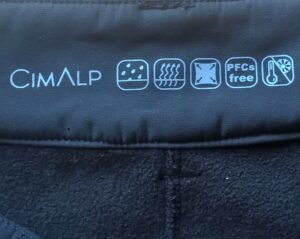
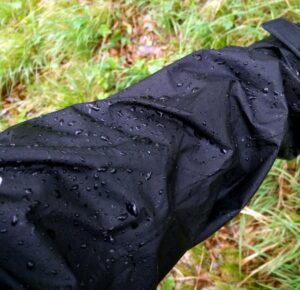

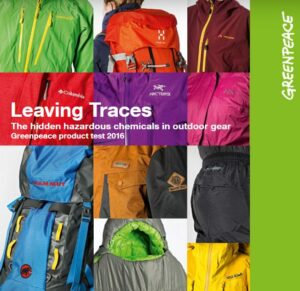
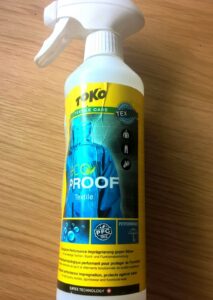
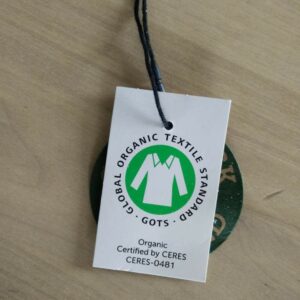
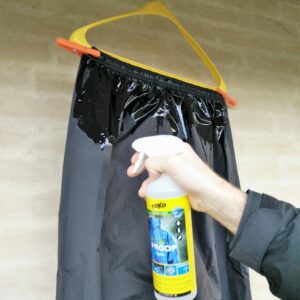
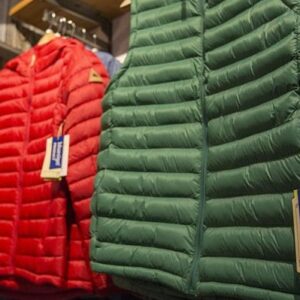
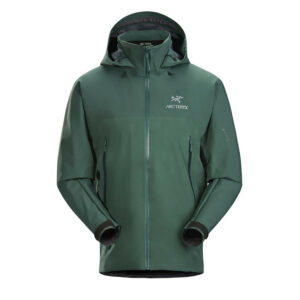

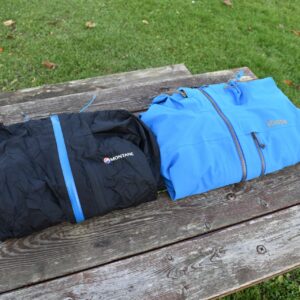



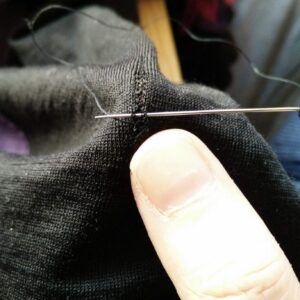











Hi, I was wondering what to do with my giid rain jackets that I own which contain PFC. Do I throw tgem away replace them with new PFC free ones? Or do I keep using them or do they continue to harm the environment by doing this?
Hi Roisin, thank you for asking this very relevant dilemma, which many of us are in. I think the short answer is that you should use your rain jackets till they are worn out and then dispose of them through some garment collecting initiative, where they will recycled with similar garments in a hopefully(!) responsible manner. When they are done for, the obvious choice is of course to buy a PFC-free rain jacket. The longer answer is, as follows: 1. As mentioned in the article, there is no evidence suggesting that you can be harmed directly by wearing a product which contain PFCs. 2. The amount of PFCs that your jackets will add to the world is minimal (this is not to say that one should keep buying garments with PFCs). 3. Your jackets are already made and disposing of them prematurely will just add to your overall environmental footprint. I hope this was a reasonable answer for a complex and difficult dilemma! Best regards, Laura